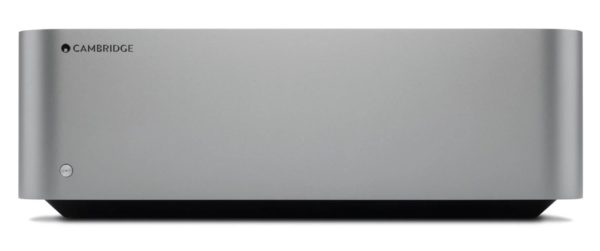
When I first saw the Cambridge Audio Edge W at the showroom here in Singapore, I was surprised that the solid-looking power amplifier had come from a company that had more often been seen as value-for-money than money-no-object.
The Edge W looks more like a more costly Classe amplifier, to be honest, than the Azur range that Cambridge Audio is known for.
Larger than the Azur amps, the Edge W power amp aimed at driving large speakers is part of the British brand’s 50th anniversary signature range that also includes a preamp and network streamer.
Indeed, I was a little surprised recently to see two Edge Ws running in mono at the B&W showroom in Singapore, powering two large 803 D3 speakers. I’d expected more expensive Classes to do the job but the Edge Ws did fine on first listen.
Piqued by that, I took up an offer to try out the Cambridge Audio Class AB amp with my humbler setup at home. I am only driving smaller B&W 805S bookshelf speakers so I connected to a single Edge W. It offers enough power with 200 watts into 4 ohms (or 100 watts into 8 ohms).
The other gear I have in my home setup are a Bluesound Node 2 streaming tracks from a local network drive and Tidal, a Belcanto DAC 3.5 digital-to-analog converter (DAC) and a Lamm LL2.1 tube pre-amp, which was previously hooked up to my Belcanto Class D mono amps.
The Edge W lets you connect up using either balanced or unbalanced outputs, depending on what gear you have. I went with unbalanced – there’s a switch for an easy change.
Once fired up, the Edge W shows that it delivers power effortlessly in spades, ready for more. There is an easy, room-filling airiness in the music delivered. Nothing seems congested or is left wanting.
The soundstaging is decent as well, at least up to the limits of my speakers. The Lamm preamp has a way of adding depth to a performance and the Edge W conveys that without getting in the way.
I had used the Lamm preamp to balance my flatter but faster Belcanto Class D amps at home but with the Edge W, the presence is even clearer. In simpler terms, it’s easier to imagine a performer right in front of you, like in a live gig.
This certainly is true with Hall & Oates’ Live At The Troubadour recording. The natural, lifelike presentation in many of the tracks showcases the capabilities of the Edge W amp well. Detail extraction is great with this album and a wide variety of musical content.
One thing I particularly like, without even listening out for it, is the transients. The quick change from soft to loud, for example, is realistic and makes you sit up. I hadn’t heard that with my older amp. Certainly, there is no lack of attack here.
With classical pieces, the power of a well made Class AB amp becomes apparent. The complexity and scale of classical pieces are well conveyed, losing little of a live performance’s details and nuances.
Those who like a bit of punchiness will also be happy with the Edge W’s bass performance. It reaches deep and offers an impactful slam with tracks that require it, whether this is electronica, rap or rock.
The Interstellar movie soundtrack is a familiar go-to piece for me and the presentation from the Edge W doesn’t disappoint. There is a weightiness and extension that my older amps don’t manage to deliver.
I’m happy that the bass notes aren’t “slow” as well. They decay or get out of the way without hanging around longer than needed. Whether firing up a Black Eyed Peas track or a Deep Purple rock classic, I get the feeling that the bass is tight, well controlled and without an incessant headache-inducing drag.
Of course, not everyone is a fan of bumping up the bass. In some instances, you do sense a bit of an artificial addition to recordings. In other words, in making the low-end stand out, the Edge W may make some tracks sound less realistic to picky listeners.
Of all the features on the Edge W, perhaps most important is the mid-range, especially for folks who listen to jazz vocals. Here, again, it is difficult to fault the sound.
There is little to colour the vocals, say, of Norah Jones, Megumi Fujino or Venissa Santi when I fire up the jazz tracks. You would characterise female vocals here as lush and velvety. An evening with a slow jazz number is a joy.
Certainly with my limited audition, the Edge W sounds the part of a signature power amp. The question is whether it will attract buyers to appreciate what it can offer.
Now, S$5,000 is a high price to many Cambridge Audio fans, who are used to paying a fraction of that for a decent amp. At this price, there are a number of rival offerings that provide a decent bang for buck as well, such as Classe’s Class D-based AMP2 (US$3,500 or S$4,795).
Of course, if you want a traditional Class AB setup that brings reservoirs of power into play, as well as a simple electrical design with just 14 components in the signal path, then the Edge W will seem attractive for its price.
Close your eyes and ignore the brand, which has been synonymous with good-value, budget hi-fi, and the music might convince you this is good-value, high-quality hi-fi. That’s a good thing, by the way.






